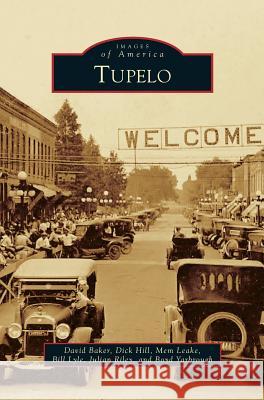Tupelo » książka
Tupelo
ISBN-13: 9781531668105 / Angielski / Twarda / 2013 / 130 str.
By 1858, construction on a new railroad from Mobile, Alabama, to Cairo, Illinois, had intersected the Fulton/Pontotoc Road near an area called Gum Pond. That location contained large numbers of tupelo gum trees, and the intersection became known as Tupelo. Many merchants in surrounding communities, like Harrisburg and Richmond, realized that the intersection was going to be a prime area for commerce and began disassembling buildings that housed places of business and relocating them to Tupelo. By the beginning of the Civil War, there were two stores, two hotels, two saloons, and a temporary depot fronting the railroad just south of present-day Main Street. During the Civil War, Tupelo became a major location for shipping grain and livestock to the Confederate army. It also served as headquarters for the Confederate Army of the West and a rest and recreation area for Confederate armies.
By 1858, construction on a new railroad from Mobile, Alabama, to Cairo, Illinois, had intersected the Fulton/Pontotoc Road near an area called Gum Pond. That location contained large numbers of tupelo gum trees, and the intersection became known as Tupelo. Many merchants in surrounding communities, like Harrisburg and Richmond, realized that the intersection was going to be a prime area for commerce and began disassembling buildings that housed places of business and relocating them to Tupelo. By the beginning of the Civil War, there were two stores, two hotels, two saloons, and a temporary depot fronting the railroad just south of present-day Main Street. During the Civil War, Tupelo became a major location for shipping grain and livestock to the Confederate army. It also served as headquarters for the Confederate Army of the West and a rest and recreation area for Confederate armies.











